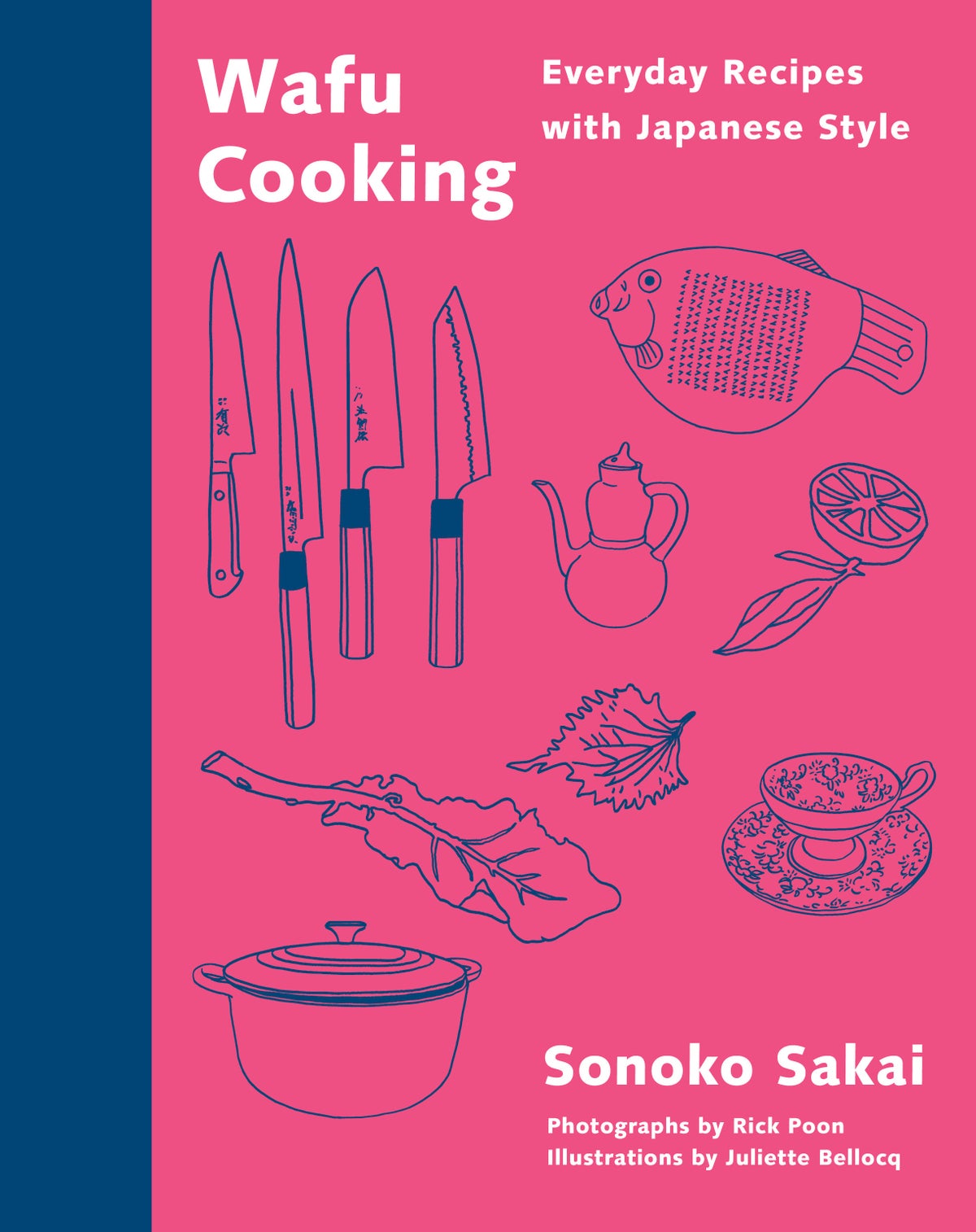
When Sonoko Sakai’s mother snuck a little miso into her lasagna, she wasn’t thinking of the kind of Japanese fusion that became an American dining craze in the 1980s.
Rather, she was doing what Japanese cooks had been doing for centuries, adapting to outside influences. Many dishes now thought of as quintessentially Japanese are fusions once considered foreign to the country.
Gyoza dumplings arrived from China only about a hundred years ago. Tonkatsu, a fried pork cutlet, came from French chefs cooking in the imperial court after Japan opened to the West during the Meiji period of the late 1800s. And curry arrived when the English brought spice mixes from their Indian colonies.
Each dish was adapted to be more, well, Japanese, said Sakai, a Japanese-American cooking instructor who explores this combination of influences in her new book, “Wafu Cooking.”
Wafu literally means “Japanese in style.” That could mean blending Western and Japanese flavors or even adjusting a dish’s presentation or sensibility to Japanese tastes.
Take tonkatsu as an example. Imperial chefs “wafued” the pork cutlets by chopping them into bite-size pieces so the meat could be picked up with chopsticks. The dish also comes with shredded cabbage to balance its richness, and with tonkatsu sauce, itself an international mashup that includes soy sauce, Worcestershire and tomato.
Sakai routinely wafues Western dishes — she is pushing the use of wafu as a verb — such as a white-bean chili in her book made extra savory from soy sauce. She adds miso to her apple pie and, like her mother, to her Bolognese sauce.
“I find that it enhances the flavor,” Sakai said. “It doesn’t make it alien or foreign. You just wonder why it tastes better.”
Slipping in an ingredient on the sly is also a Japanese tradition, one called kakushiaji. It means “secret flavor” but Japanese cooks think of them more like secret agents, Sakai said. “I call them little ninjas.”
She sneaks sake, soy sauce and ginger into her Italian Wedding Soup, a dish she learned from relatives on her grandmother’s side, who are from the Italian part of Switzerland. The pork meatballs are similar to the filling she makes for her gyoza, using potato starch as a binding agent instead of the egg in Italian meatballs.
“I didn’t have to reinvent this recipe,” Sakai said. “I’m just doing what I do. I have these seasonings. Sometimes I think it needs a little bit of this, a splash of that. And if you have these Japanese ingredients, give it a try.”
Sonoko Sakai’s Japanese Italian Wedding Soup from “Wafu Cooking”
https://www.sonokosakai.com/
For the meatballs:
1 pound ground pork
1 yellow onion, grated
1 garlic clove, minced
1 egg
1 tablespoon sake or white wine
1 tablespoon soy sauce
2 tablespoons potato starch or cornstarch, diluted in 2 tablespoons water
½ teaspoon sea salt
¼ teaspoon freshly ground pepper
¼ cup minced fresh parsley
1½ teaspoons oregano
½ cup grated Parmesan cheese
For the soup
2 tablespoons extra-virgin olive oil
½ yellow onion, diced
2 garlic cloves, minced
1 large carrot, peeled and diced
8 cups chicken broth
¼ cup sake
1 tablespoon soy sauce
½ head escarole, coarsely chopped
½ cup acini de pepe or other small pasta (such as orzo)
1 teaspoon lemon zest
Grated Parmesan cheese, to serve
Crusty bread, to serve (optional)
Directions
Preheat the oven to 425°F (218°C).
To make the meatballs, combine the pork, grated onion, garlic, egg, sake, soy sauce, diluted starch, salt, pepper, parsley, oregano and Parmesan in a medium bowl. Mix the ingredients with your hands until just combined. Form meatballs about 1 tablespoon in size, and set them on a parchment-lined sheet pan. You will get about 40 meatballs. Bake on the middle rack for 20 minutes, until they are lightly browned and nearly cooked.
To make the soup, set a large pot over medium, add the oil, and sauté the onions and garlic until softened, about 3 minutes. Add the carrots and sauté for another 2 to 3 minutes. Then add the broth, sake and soy sauce to the pot and bring to a boil. Lower the heat to a simmer and add the meatballs, one at a time. Simmer until the meatballs are cooked through, about 5 to 7 minutes. Add the escarole, cover with the lid, and simmer for another 10 minutes.
In the meantime, bring a small saucepan of water to a boil over high heat. Add a pinch of salt and the pasta. Lower the heat to a simmer and cook until al dente. Rinse with cold water, drain and set aside.
Just before serving the soup, add the cooked pasta to the pot. Season with salt, pepper and lemon zest. Serve with grated Parmesan and crusty bread, if desired.
EDITOR’S NOTE: Albert Stumm writes about food, travel and wellness. Find his work at https://www.albertstumm.com







